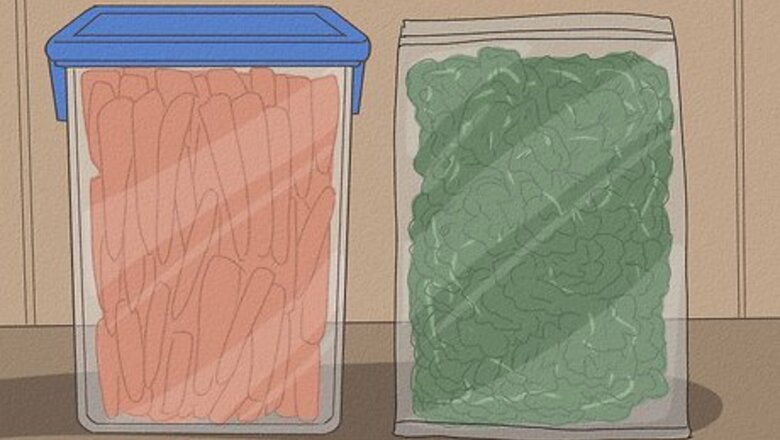
views
- In a cool, dry, and dark environment, dried goods can last 6 to 12 months.
- Keep your pantry or storage area between 50 to 70 °F (10 to 21 °C) to prevent bacteria from growing on your dried goods.
- Store your dehydrated foods in airtight glass containers or vacuum-sealed bags to ensure they have the longest shelf life.
How long does dehydrated food last?
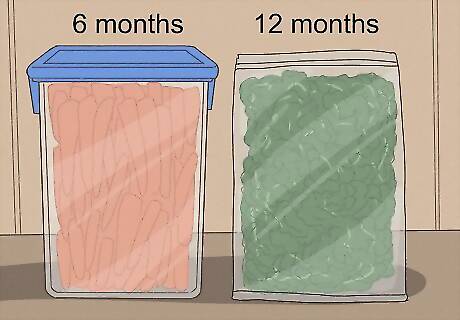
When properly stored, dried foods can last between 6 and 12 months. Dehydrated fruits can stay fresh in an airtight container for up to 6 months, while dried vegetables can last up to a year. Good and okay to eat dehydrated food is dry and free of odors. If the food is moldy, has a sour smell, or looks moist, toss it out. Commercially dried food can last longer than 12 months thanks to preservatives, but experts advise only storing homemade dried food for 6 to 12 months. Because of this, commercially dried food is best for long-term storage and at-home dried food is great for short-term storage. Use your best discretion when it comes to knowing if dehydrated foods are good or not. If something seems off, don’t eat it.
How to Make Dried Food Last
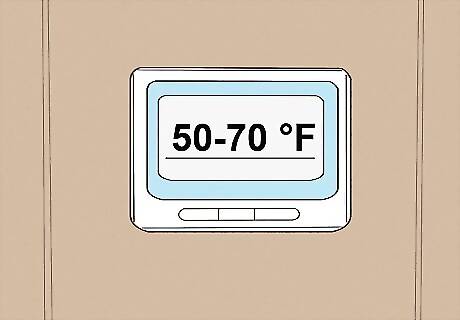
Keep your pantry between 50 to 70 °F (10 to 21 °C). If your pantry is too hot, it could cause your dried goods to spoil faster. Consider keeping a thermometer in your pantry to make sure it stays the right temperature all year round.

Store dried goods in a dark place. Just like heat, light can make your dehydrated foods spoil faster. Make sure your pantry or storage location is away from direct sunlight. This way, your goods won’t go bad as quickly. If there’s a window in your pantry or storage area, hang up a curtain to block the natural light. Always turn off the light when leaving the storage area.

Store your food in glass containers. Plastic may seem convenient, but it could make your dried goods spoil faster. Over time, air can seep into plastic containers and bring moisture and chemicals into an airtight space. Glass containers (like mason jars) are the best storage option for dehydrated foods because of this. Make sure your glass containers have airtight seals on them. If you have to use plastic containers, make sure they're made of food-grade and BPA-free plastic.
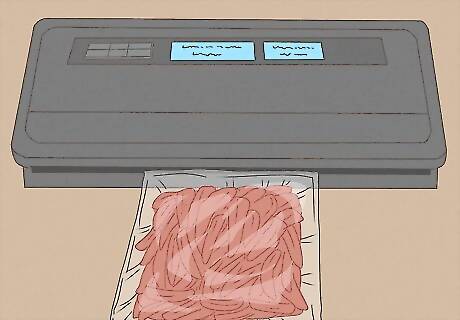
Vacuum seal dried food when you can. The more airtight your storage container, the better. Dehydrated foods last for months because they have less moisture than hydrated foods. Vacuum sealing is one of the best ways to keep dried goods fresh because without air, there’s no moisture. Consider investing in vacuum sealing food bags. There are even reusable, zippable products you can use while backpacking.
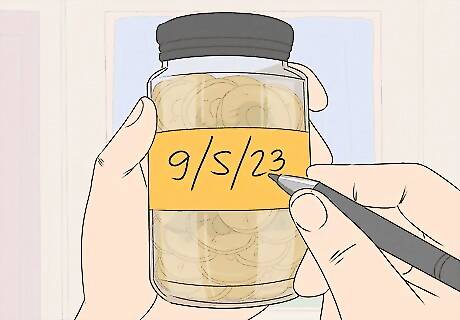
Label your goods. As you package your dried foods, write on the containers when they were dehydrated. This simple step can save you from worrying in the future. Mark the containers with the name of the food and the month and year of drying.
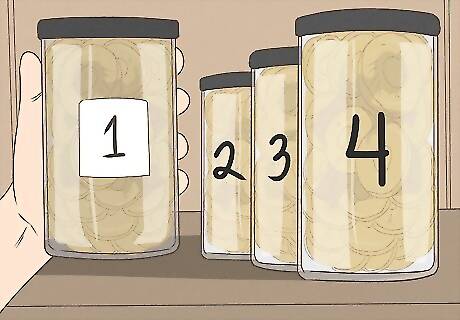
Follow a “first in, first out” rule. As you stock up your pantry or backpacking supplies, make sure you use the older dehydrated food first. Even though dried goods last longer, it’s best to cycle through them to avoid waste.
At-Home Dried Food Prep
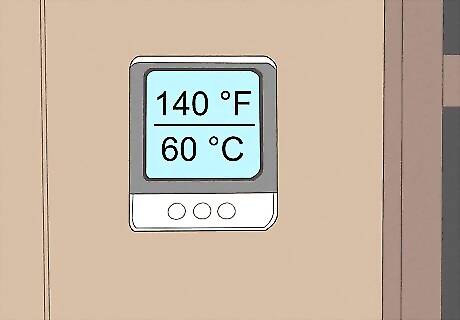
Dry foods at the proper temperature. The general drying temperature for dehydrating food is 140 °F (60 °C). If a higher temperature is used, the food may “case harden” and the moisture won’t be able to escape. Stick to the recommended drying temperature and don’t rush the drying process.
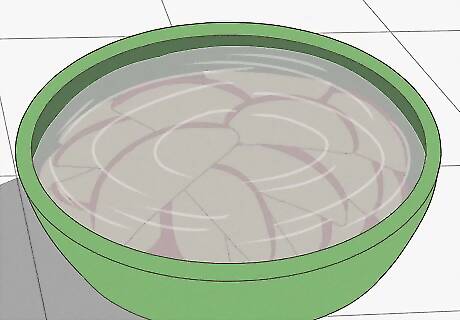
Prepare foods properly before dehydrating. Whether you’re dehydrating fruits or vegetables, you should prep the foods with a pretreatment. This ensures that your food will last as long as possible. For drying fruits, pretreat with an ascorbic acid dip. Mix 1 tsp (0.021 c) of powdered ascorbic acid in 2 c (470 ml) of water, and soak the fruit in the solution for 3 to 5 minutes. For drying vegetables, pretreat with water blanching. Bring a large pot of water to a boil, submerge the vegetables in the water for a few minutes, then remove them.
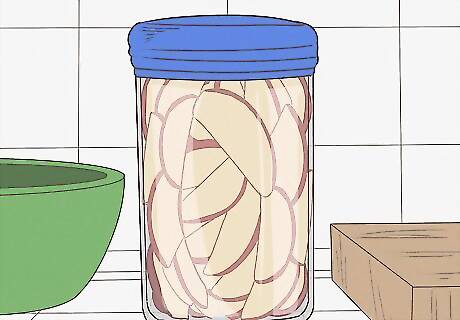
Condition dried fruits before storing. There should be about a 20% moisture content in properly dehydrated fruits. Because of this, many fruits aren’t ready to be stored the second they come out of the dehydrator. Help reduce the risk of mold and make your dried fruit last longer by following these steps: Let the fruit cool completely. Pack them loosely into plastic or glass jars. Seal the containers and let them be for 7 to 10 days. Shake the jars every day to separate the fruit pieces. Return the fruit to the dehydrator if condensation develops in the jars.
What foods can you dehydrate?

FruitsApples, bananas, pears, peaches, and blueberries are only a handful of the fruits you can dehydrate. These dried, chewy fruits are the perfect pairing to granola, cereal, or trail mix. Try dehydrating citrus fruits like lemons and oranges for a sweet trail snack. Dehydrate raspberries and use them as a sweet powder to sprinkle over cakes, yogurt, and oatmeal.
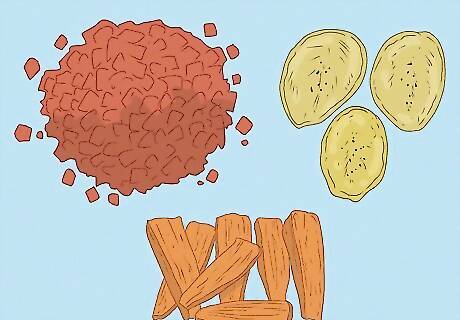
VegetablesCarrots, sweet potatoes, onions, peas, and mushrooms are great veggies to dehydrate. Not only are these vegetables packed with nutrients, but their dried form can add flavor to soups, chilis, and stews. Make dehydrated veggie packets to add to ramen and instant soups when you’re on the go. Toss dried peas, onions, and carrots into a portion of uncooked rice for an easy backpacking meal.
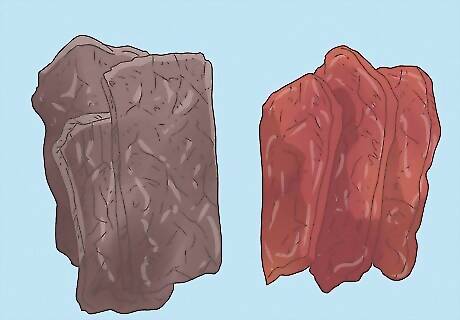
MeatsSliced and cured meats can make excellent jerky. Dehydrating meat may seem complicated, but it’s easier than you may think! Plus, jerky is a great addition to any long-term storage or backpacking kit because it's packed with nutrients and calories. Dry bite-sized pieces of turkey, chicken, or beef to toss in stews or soups. Make beef jerky using a preferred seasoning like pepper, cumin, or chili powder for extra flavor.



















Comments
0 comment